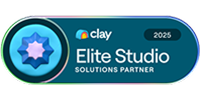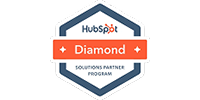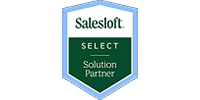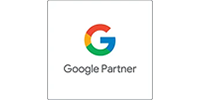What You Thought You Knew About the Marketing Funnel

Marketing is about putting your product in front of customers. Right? NOPE.
When you develop a marketing plan, the goal is always to guide your customer along the “funnel,” that figurative symbol of buyer readiness. There’s going to be some persuasion involved as they draw closer to the sale, but it’s really more accurate to say that marketing is about education. As a reputable and caring business, you should be motivated to comment and contribute useful information that is related to your audience’s interests, then, when it makes sense, bring the conversation back around to how you can serve them (i.e. sell to them!).
Here are some tips to tweak your communication messages and techniques so that they align with the stages of the marketing funnel.
STAGE 1: AWARENESS
 What You Already Know: You’re trying to raise awareness about your brand.
What You Already Know: You’re trying to raise awareness about your brand.
What You Need to Realize: You need to make your customer aware of problems they may be facing in their daily life.
If you try and shove your leads down the marketing funnel, it’s going to get clogged up and nothing will come out the other end. At this stage, the conversation isn’t about pushing your name in front of people and letting them know you sell a thing. Odds are, there are plenty of other companies that sell a thing, too. If a customer conducts a Google search for that thing, they’ll just as easily find you (maybe not if you haven’t tended to your SEO, but that’s another topic). In other words, you need to stand out and break expectations.
Consumers expect to get advertised and pitched to, what with being exposed to countless brands and advertisements over the course of a single day. Disrupting your space, then, can be as simple as demonstrating understanding. If you can align yourself with the customer, you’ll not only get them to look in your direction, you’ll build trust. Help them realize you love the things they love, hate the things they hate, and genuinely care about giving them tips - not just product suggestions - for succeeding in life.
Take Action: Compile some background information on your audience.
Poll your best existing customers to identify their interests and the value that your product has brought them in everyday use. We’re not talking about benefit statements here, either - you want to learn how they live their lives. For example, do most of your customers have kids? Does your product help them get out of the office sooner so they don’t miss any little league games? Boom - that’s the foundation for an Awareness message.
Pro Tip: Keep in mind that survey compliance can be tough to achieve if the surveys are long, if there’s no incentive to completing them, and well… because it’s an optional survey. If you are having trouble getting answers right from the source, turn to your sales team. They’ve built relationships and have had conversations that go beyond the scope of the product call, and are thus a solid fallback for information gathering.
STAGE 2: CONSIDERATION

What You Already Know: You’re trying to differentiate from competitors.
What You Need to Realize: Customers easily identify a good solution based on benefits, not features.
Your ideal audience is going to make their purchase decision based on whether or not they can see the value in the choices in front of them. Granted, there are going to be folks out there who decide to go with one competitor over another simply because their version “comes in blue” or something, but most of the time it’s a little deeper than that. Plus, selling on features isn’t sustainable, especially in spaces like technology. The more reliable technique, then, is to emphasize the underlying and unseen benefits of your product.
To understand why benefits trump features, we can look at psychology. Think of features-based decisions as logical ones: pros vs. cons, does the solution fit the problem, etc. Benefits-based decisions, on the other hand, are rooted in emotion: will I be happy with this choice? FastCompany took a look at several psychological studies that all cited evidence of decision-making being based on factors that were completely unrelated to the content of the decision, indicating that the context in which people make decisions affects the final outcome. In other words, how they felt influenced their final choices, not what they knew.
Take Action: Build a features vs. benefits table (click here to download a sample one now).
Free Content Alert! Click here to download your free Ultra Benefits Statement worksheet.
In case you haven’t thought about it before, don’t worry - identifying your product or service’s key benefits isn’t too tough. That’s because most product features have a one-to-one relationship with a corresponding benefit, purely based on their function. When you put that function in context of your customer’s underlying concerns (that you may have identified during the Awareness stage), you can tailor each benefit statement to best stand out to your customers. And if you’re standing out, you’re standing apart from the competition.
Pro tip: Almost all of your marketing assets, with the exception of perhaps product specification documents, can be strengthened by adding benefit statements. The one area where you should absolutely ALWAYS list out benefits, however, is on a landing page. Your goal in that environment is to convey that whatever the consumer is signing up for or downloading is going to hold lasting value for them. And if you can’t communicate that honestly, consider leveraging a different offer. The last thing you’d want to do is deceive your lead and break their trust.
STAGE 3: DECISION

What You Already Know: It’s selling time!
What You Need to Realize: Selling a single product will never be as valuable as building a relationship.
It’s common knowledge that the cost of customer acquisition is about five times higher than the cost to retain customers. That makes sense, and this blog article is a perfect example of why. By the time you’ve successfully led someone through the marketing funnel, you’ve likely fed them a lot of content, with each piece costing something to produce. When it comes time for the final pitch, remember that even if it doesn’t land, you’re in a good position to try again later. That lead knows your brand, and, ideally, knows they can trust your input. Considering that, continue to produce your best stuff and deliver it to them.
Take Action: Develop a killer content delivery system.
Try this out - the single-subject newsletter. It’s quicker to produce, easier for recipients to digest, and looks nicer than the old-school, “jam-packed” format. With single-subject newsletters, you can maintain a higher send frequency and therefore, a stronger presence. By occasionally accompanying your helpful article with a quick link to a product offer, you can also leverage those messages as direct-to-inbox advertisements to coerce your leads back into the sales cycle.
Marketing automation and even some CRM systems are the perfect tools to make continuous communication easy to manage. Once they’re set up and you have your audience lists, you can churn out tailored messages to precisely the right people. That way, you can maximize your production efficiency and produce communications without having to put in an excessive amount of work.
Pro Tip: Create a special identifier for your lost sales opportunities. Treat them like VIPs. Customers always come first, but you can still give out “exclusive” content, first dibs on event invitations, and special offers to the ones who came close. By tagging them in your CRM or marketing automation system, you can easily separate them from the masses and deliver that special treatment.
If we sum up the purpose of the marketing funnel, it’s an incubation period for your leads. It’s a time for you to build a relationship - not necessarily push your product. Follow these digital marketing best practices when you do launch that new campaign, and be sure to educate and relate to your audience to best prepare them for the subsequent sales cycle. Speaking of the sales cycle, are you prepared to efficiently close your deals once they get to that point? If you’re looking to maximize your opportunity closure rate, check out this free downloadable eBook, Take Your Sales Program from 0 to 60 in 8 Easy Steps.











